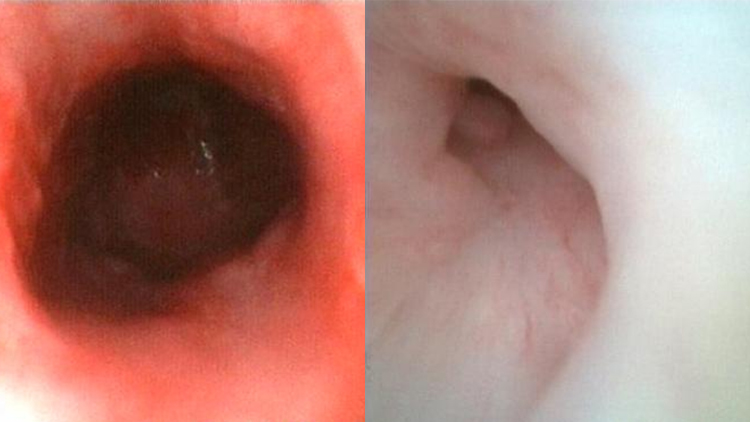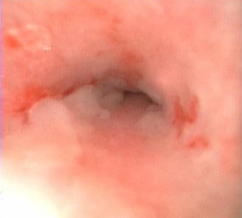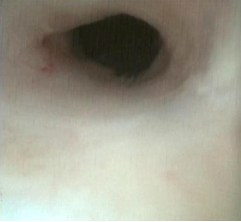
2023-06-02 3153
Abstract
The 5-year-old Bichon Frise was referred to our hospital due to urination disorders. After being diagnosed with urethritis, he recovered and was discharged after 11 days in combination with laser therapy and symptomatic treatment. Laser therapy had an obvious anti-inflammatory and analgesic effect in this case, accelerated the recovery time of the affected dog, significantly shortened the course of the disease, and there was no recurrence after treatment.
Key words: laser treatment, urethritis, cystitis, analgesia, anti-inflammatory
1.Case presentation
NAME: Rio
SPECIES: Canine
GENDER: Female
AGE: 5
WEIGHT:4.7kg
Due to bladder stones in other hospitals, the catheter was removed in the evening of 09.09, and the urination was smooth in the morning of 09.10. The appetite is general. The owner found that he did not urinate for a day, and then he saw a doctor. Affected dogs have a complete vaccine and a regular deworming system.
2. Examination
2.1 Physical examination
General spirit, moist nasal lens, visual mucosa pink and white, CRT <2s, no obvious dental calculus. The bladder is extremely inflated.
2.2 Imaging examination
2.2.1 The left kidney has small volume, uneven margins, parenchymal calcification, small renal pelvis effusion, reduced ureteral echo, suspected chronic kidney disease, ureteral injury or ureteritis; the right kidney slightly hypertrophy, renal pelvis fluid, suspected chronic kidney disease.
2.2.2 The bladder was moderately filled, bladder wall echo increased, suspected cystitis; visible deposition particles on the heavy side of the bladder, suspected bladder stone (long diameter about 0.44cm); urethral echo decreased, suspected urethritis or urethral injury.
2.2.3 Liver echo was reduced and hepatitis was suspected.
2.2.4 Cholestasis
2.2.5 A small volume of fluid was accumulated around the left kidney
2.3 Hematological examination:
Item |
Result(09.11) |
Result(09.12) |
Reference ranges |
GLU(mmol/L) |
6.27 |
5.46 |
4.11-7.95 |
CREA(μmol/L) |
456 |
128 |
44-159 |
UREA(mmol/L) |
19.3 |
7.7 |
2.5-9.6 |
BUN/CREA |
10 |
15 |
|
TP(g/L) |
74 |
86 |
52-82 |
ALB(g/L) |
30 |
36 |
23-40 |
GLOB(g/L) |
44 |
50 |
25-45 |
ALB/GLOB |
0.7 |
0.7 |
|
ALT(U/L) |
14 |
33 |
10-125 |
ALKP(U/L) |
136 |
26 |
23-212 |
3. Diagnose
Urethritis, cystitis, and acute kidney injury
4. Treatment
4.1 Bladder puncture: no urination after 24h, a large amount of urine in the bladder, requiring puncture and decompression.
4.2 Dwelling catheter: urinary tract disease causes animals to not urinate, and elevated plasma creatinine urea nitrogen causes acute kidney injury. Dwelling catheter can observe the urine production of animals after hospitalization, which is conducive to the prognosis judgment and timely adjustment of treatment plan.
4.3 Anti-inflammatory and analgesic: The filled bladder can cause pain in the lower abdomen of animals, and the primary causes of no urination and bladder filling will also cause pain in animals, so anti-inflammatory analgesia is needed.
4.4 Hydration: Acute kidney injury requires a lot of fluids, and a full bladder can cause discomfort and reduce water intake. Dehydration also requires hydration to correct hydration.
4.5 Laser treatment: laser treatment can play the effect of analgesia, inflammation and spasm at the same time, promote blood circulation and the release of various factors in the body, and accelerate the recovery of urethra and bladder inflammation.Urethral spasmolysis: urethral inflammation can cause urethral sphincter spasm, drugs can help to relieve the urethral sphincter spasm.
5.Treatment effect


*Comparison before and after laser treatment
On the day of treatment、, cystoscopic images showed that the urethra wall surface of the dog was not smooth and flushing, indicating obvious urethral inflammation; after one week of treatment , the urethra wall inflammation was significantly improved; on the 11th day of treatment , the urethral wall returned completely to normal, and the urethra wall surface was smooth, without flushing, indicating the urethra inflammation.
5. Summary
The whole treatment process was relatively smooth, at the beginning of the case after the diagnosis of the laser as a treatment project, The overall treatment time is usually longer than traditional treatment methods in cases without laser therapy, which was quickly recovered and discharged after laser therapy intervention.In small animal medicine, most of the potent opioid analgesic drugs cannot be used in the clinic, so there are limited number of drugs available in the pain management of similar cases. Laser treatment can provide appropriate analgesic effect in this case, which is very meaningful for the cure time and the treatment experience.
6. Discuss
Lower urinary tract syndrome usually occurs in male cats, and a few females suffer from urinary tract disease. Therefore, the treatment of FLUTD (feline lower urinary tract disease) was used, and laser therapy was used to relieve the pain and inflammation related to the urethra. The irradiation sites are the bladder, urethra, and the spinal segment nerve controlling the lower abdominal nerve , pelvic cavity and pudendal nerves.NIR light at the photobiomodulated dose is able to effectively relieve inflammation in the bladder and urethra. For example, an 810nm laser beam at 20J can bring 2-4J of abdominal energy to the bladder and urethra. Nural sensitization is considered to be an important factor in the persistence and recurrent episodes of FLUTD. Irradiation of the sympathetic, parasympathetic and somatic spinal ganglia nerves controlling the bladder helps to relieve the acute and chronic pain associated with FLUTD.
For the lack of clinical analgesic drugs in small animals, any physical way that can have an analgesic effect is a light on the road of animal welfare. The ideal drug for both anti-inflammatory and analgesic is NSAIDs, but in animals with urinary tract disease, usually acute or chronic kidney damage, and poor hydration, the NSAIDs appears weak in this case.Fortunately, with the development of technology, more physiotherapy is becoming the mainstream, and laser therapy is one of them. For patients with urinary tract syndrome, laser therapy not only has no side effects, but also provides very strong analgesic and anti-inflammatory effects, which is very efficient and friendly for small animal clinicians.